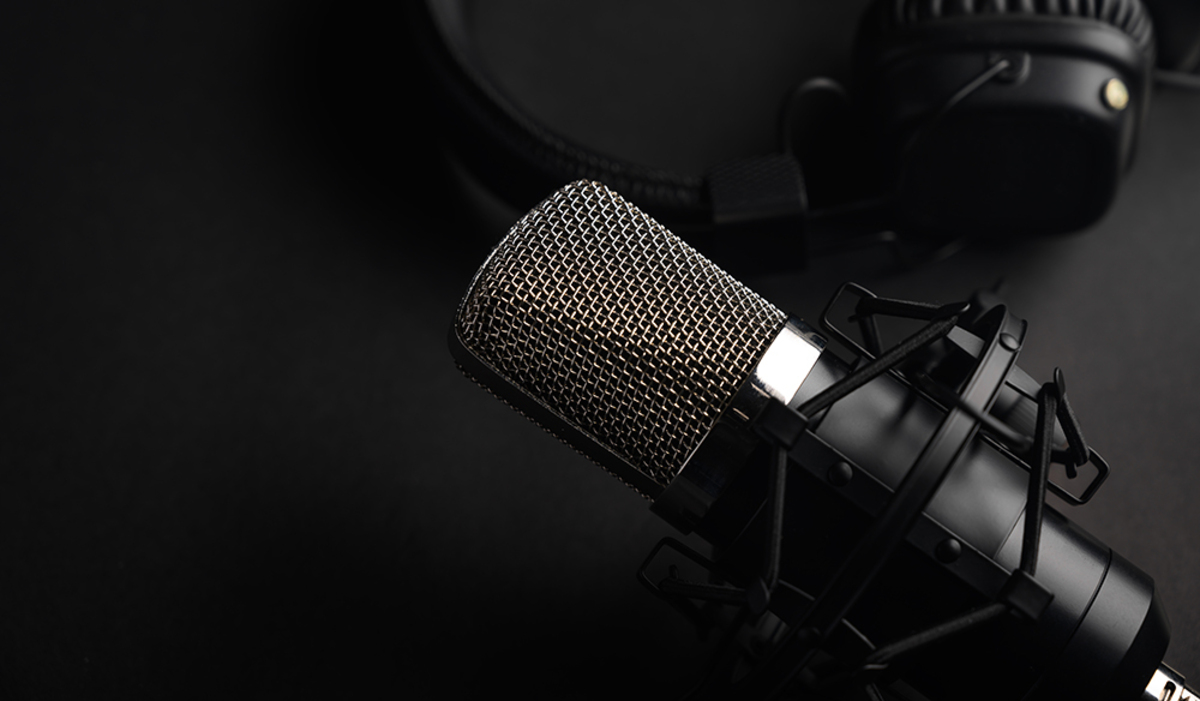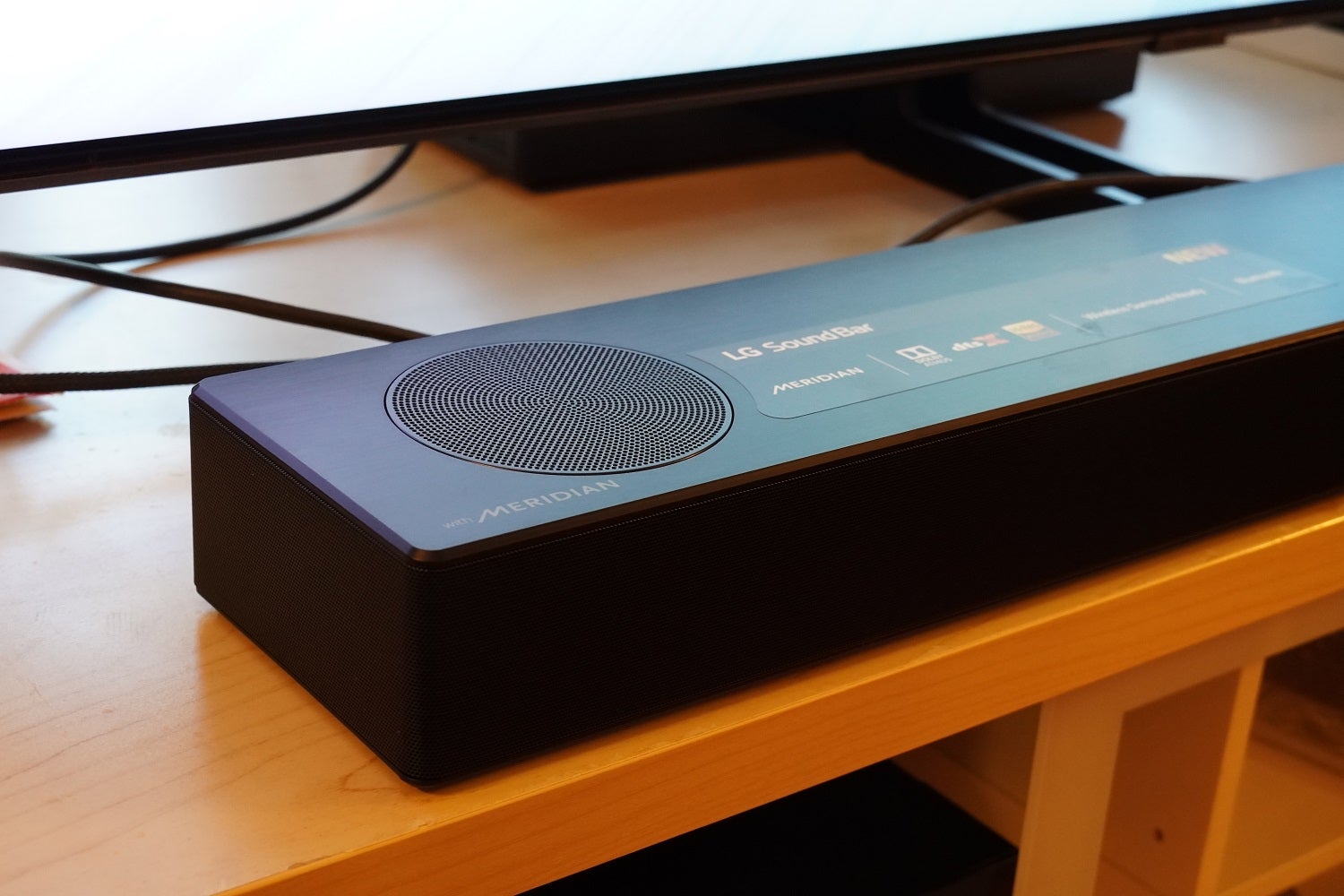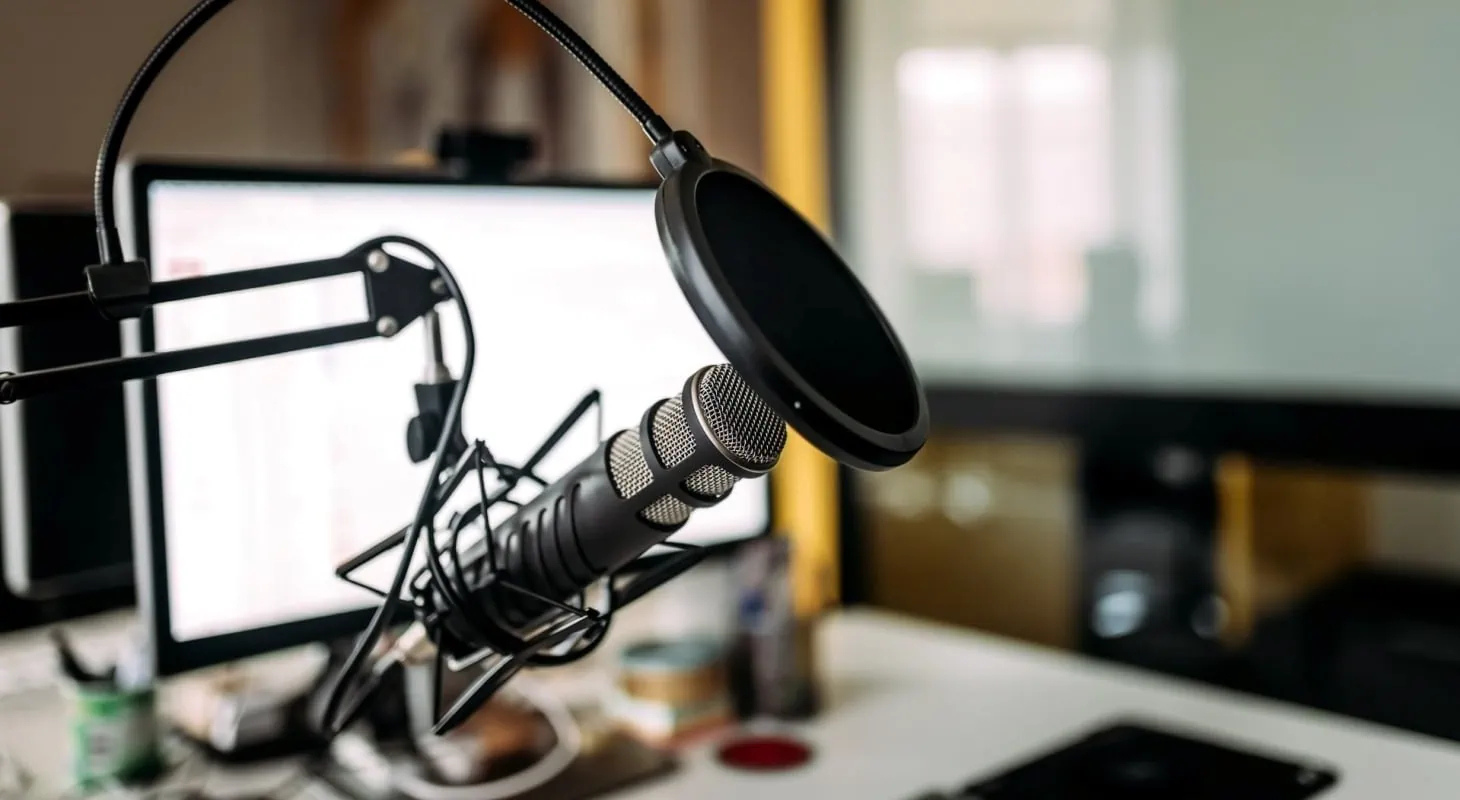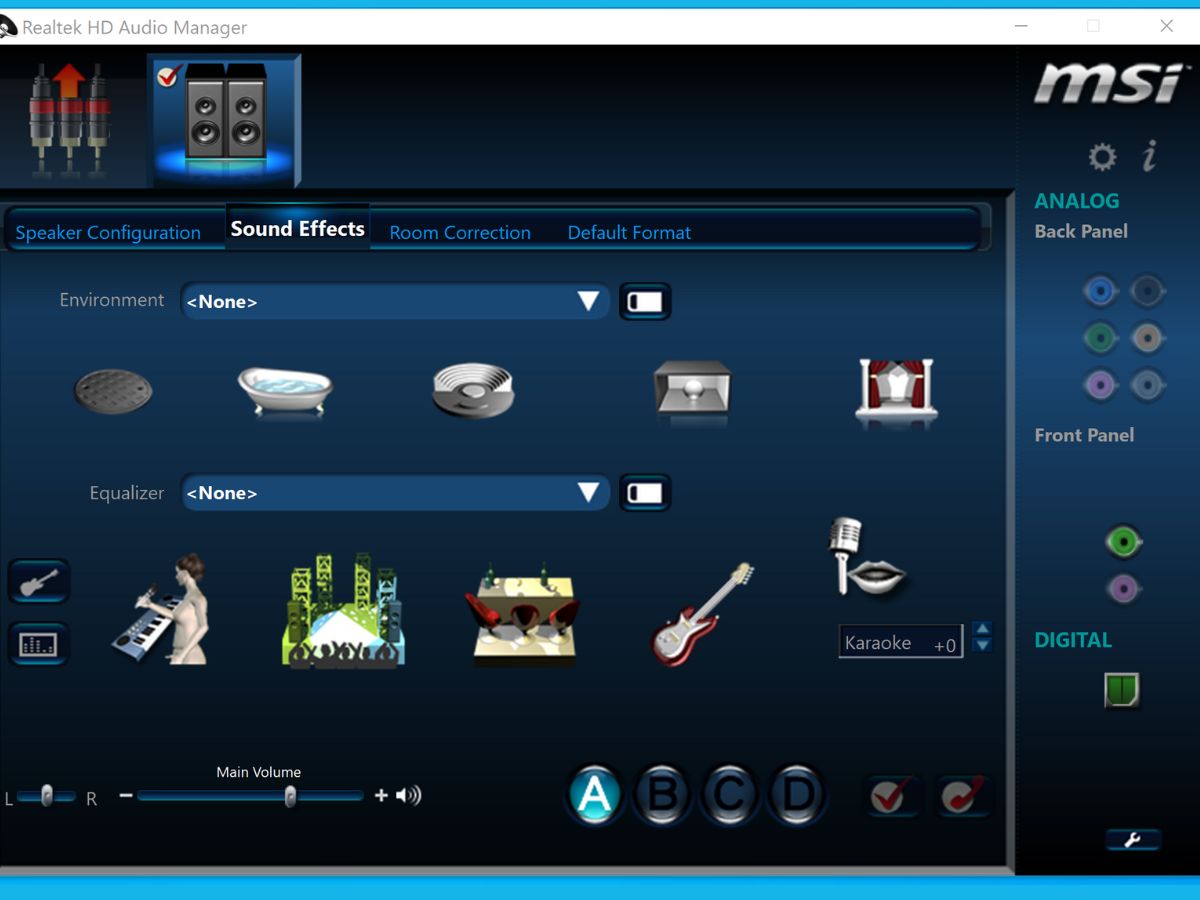Home>Devices & Equipment>Microphone>How To Make Microphone Louder


Microphone
How To Make Microphone Louder
Published: February 16, 2024
Learn how to make your microphone louder and improve your audio quality with these simple and effective tips. Enhance your recording and sound output.
(Many of the links in this article redirect to a specific reviewed product. Your purchase of these products through affiliate links helps to generate commission for AudioLover.com, at no extra cost. Learn more)
Table of Contents
Introduction
Introduction
Microphones are essential tools for capturing sound, whether it’s for recording music, hosting a podcast, conducting interviews, or amplifying a voice for public speaking. However, there are instances when the microphone’s output may not be as loud as desired, leading to issues with clarity and volume. In such cases, it becomes necessary to explore various methods to make the microphone louder without compromising sound quality.
In this comprehensive guide, we will delve into the intricacies of microphone gain, explore the use of preamps, discuss adjusting input levels on a mixer, examine software solutions for boosting microphone volume, and consider the application of compressors. By understanding and implementing these techniques, individuals can effectively amplify the output of their microphones, ensuring clear and robust sound reproduction for diverse applications.
Whether you are a musician, podcaster, content creator, or public speaker, the ability to make your microphone louder can significantly enhance the impact and quality of your audio recordings and live performances. Let’s embark on this journey to unlock the potential of your microphone and elevate the auditory experience for both you and your audience.
Understanding Microphone Gain
Before delving into methods for increasing microphone volume, it’s crucial to grasp the concept of microphone gain. In the realm of audio engineering, gain refers to the amplification of an audio signal, effectively increasing its strength or amplitude. When it comes to microphones, understanding gain is fundamental to optimizing their performance.
Microphone gain is the control that determines the level of amplification applied to the incoming signal. It governs the sensitivity of the microphone and dictates how loud the captured sound will be. This control can typically be found on audio interfaces, mixers, and preamps, allowing users to adjust the input level of the microphone to achieve the desired volume.
It’s important to note that while increasing the gain can make the microphone louder, excessive gain levels can lead to undesirable consequences such as noise, distortion, and feedback. Therefore, finding the optimal balance is essential to ensure a clean and clear audio output.
When dealing with microphone gain, it’s beneficial to consider the microphone’s sensitivity and the sound pressure levels (SPL) it can effectively capture. Condenser microphones, for instance, tend to be more sensitive and can capture a broader range of frequencies, making them suitable for capturing nuanced audio details. Dynamic microphones, on the other hand, are less sensitive and are often preferred for handling high SPL environments such as live performances.
Understanding the characteristics of different microphones and their inherent gain capabilities empowers users to make informed decisions when amplifying their audio signals. By comprehending the nuances of microphone gain, individuals can navigate the process of making their microphones louder with precision and finesse, ultimately optimizing the quality of their audio recordings and live sound reinforcement.
Using a Preamp
When seeking to increase the volume of a microphone, utilizing a preamplifier, or preamp, can be a highly effective strategy. A preamp is a device designed to amplify low-level audio signals from microphones or other sound sources to a level that is suitable for further processing or recording. It serves as an intermediary between the microphone and the recording or sound reinforcement system, offering a means to boost the microphone’s signal before it reaches the main audio interface or mixer.
Preamps come in various forms, including standalone units, built-in components within audio interfaces, and dedicated outboard devices. They are equipped with gain controls that enable users to precisely adjust the amplification level of the incoming audio signal. By strategically increasing the gain using a preamp, individuals can effectively make their microphones louder without compromising sound quality.
For individuals working with dynamic microphones or ribbon microphones, which tend to produce lower output levels, a preamp can be particularly beneficial. By introducing a preamp into the signal chain, users can elevate the microphone’s output to a more robust level, ensuring that the captured sound is adequately amplified for recording, broadcasting, or live sound reinforcement purposes.
Furthermore, preamps are available in a range of configurations to accommodate different microphone types and applications. Some preamps offer specific impedance settings to match the requirements of different microphones, while others provide options for adjusting tonal characteristics, allowing users to tailor the sound to their preferences.
Whether it’s for studio recording, live sound reinforcement, podcasting, or broadcasting, incorporating a preamp into the audio setup can significantly enhance the ability to make a microphone louder while maintaining optimal signal integrity. The versatility and precision offered by preamps make them indispensable tools for achieving professional-grade audio amplification and ensuring that the full potential of the microphone is realized in diverse creative and professional endeavors.
Adjusting Input Levels on a Mixer
Another effective method for increasing the volume of a microphone involves adjusting the input levels on a mixer. Mixers, whether analog or digital, serve as central hubs for managing audio signals from various sources, including microphones, instruments, and playback devices. They offer a range of controls for manipulating the levels and properties of incoming audio, making them indispensable tools for optimizing sound reinforcement and recording setups.
When working with microphones, mixers provide dedicated input channels equipped with gain controls that allow users to adjust the amplification of individual audio sources. By carefully adjusting the input levels on the mixer, individuals can effectively boost the volume of their microphones to achieve the desired output level.
It’s important to approach the process of adjusting input levels with precision and attentiveness to avoid issues such as clipping, distortion, and noise. Proper gain staging, which involves setting optimal input levels at each stage of the signal chain, is essential for maintaining signal integrity and achieving clean, distortion-free audio amplification.
When increasing the input levels for a microphone on a mixer, it’s advisable to start with conservative settings and gradually raise the gain while monitoring the signal for any signs of distortion or unwanted noise. By exercising care and attentiveness during this process, individuals can ensure that the microphone’s output is amplified to the desired level without compromising sound quality.
Furthermore, some mixers offer additional features such as pad switches, high-pass filters, and phase inverters that can further enhance the control and performance of microphones in diverse audio applications. These tools provide users with the flexibility to fine-tune the characteristics of the incoming audio signals, allowing for precise adjustments to achieve optimal volume and tonal quality.
Whether in a recording studio, live sound environment, or broadcasting setup, the ability to adjust input levels on a mixer empowers individuals to effectively make their microphones louder while maintaining a balanced and pristine audio output. By leveraging the capabilities of mixers and exercising sound engineering practices, users can optimize the performance of their microphones and elevate the overall quality of their audio productions and live sound reinforcement endeavors.
Using Software to Boost Microphone Volume
In addition to hardware-based solutions, leveraging software tools can be a valuable approach to increasing the volume of a microphone. With the advancement of digital audio technology, a myriad of software applications and plugins are available to manipulate and enhance audio signals, offering users the flexibility to fine-tune the volume and characteristics of their microphone inputs.
One common method of boosting microphone volume through software involves utilizing digital audio workstations (DAWs) and audio editing software. These platforms provide users with a range of tools and features for processing and enhancing audio recordings, including the ability to adjust levels, apply gain, and utilize dynamic processing to amplify the volume of microphone inputs.
Within DAWs, users can access dedicated gain controls and volume faders to increase the level of recorded microphone tracks. Additionally, plugins such as equalizers and dynamic processors can be employed to further shape and amplify the microphone’s output, allowing for precise control over the volume and tonal characteristics of the recorded audio.
Furthermore, real-time audio processing software and virtual audio devices offer solutions for boosting microphone volume during live sound reinforcement, streaming, and video conferencing. These tools enable users to apply gain adjustments and dynamic processing to incoming microphone signals, ensuring that the output is amplified to the desired level without compromising audio quality.
It’s important to approach software-based volume boosting with a discerning ear, as excessive digital gain can introduce artifacts and noise into the audio signal. By exercising restraint and applying gain adjustments judiciously, users can effectively increase the volume of their microphones while preserving the clarity and fidelity of the captured sound.
Moreover, the integration of software-based solutions for boosting microphone volume offers a high degree of flexibility and adaptability, allowing users to tailor the amplification process to suit specific recording, broadcasting, or live sound requirements. Whether in a professional studio setting or a remote recording environment, the utilization of software tools for volume enhancement empowers individuals to achieve optimal audio levels and sonic characteristics with precision and efficiency.
Using a Compressor
When aiming to make a microphone louder while maintaining consistent and controlled audio levels, employing a compressor can be a highly effective approach. A compressor is a dynamic signal processing tool that is widely utilized in audio production and sound reinforcement to regulate the dynamic range of audio signals, ensuring that loud and quiet sounds are balanced and controlled.
By incorporating a compressor into the signal chain of a microphone, users can effectively boost the microphone’s volume while mitigating the risk of signal peaks and excessive dynamic variations. Compressors achieve this by reducing the level of audio signals that exceed a specified threshold, thereby allowing for an overall increase in the perceived volume without causing distortion or clipping.
When utilizing a compressor to make a microphone louder, it’s essential to configure the compressor settings in a manner that aligns with the characteristics of the incoming audio signal. This involves adjusting parameters such as threshold, ratio, attack, release, and makeup gain to achieve the desired level of volume enhancement while preserving the natural dynamics and tonal qualities of the microphone’s output.
Furthermore, the application of compression can be particularly beneficial in scenarios where the microphone is used to capture vocals, musical instruments, or spoken dialogue. By effectively controlling the dynamic range and transient peaks of the microphone’s signal, a compressor ensures that the audio output remains consistent, intelligible, and impactful, making it an indispensable tool for achieving professional-grade sound reinforcement and recording results.
Moreover, modern audio processors and digital audio workstations often feature software-based compressors and dynamic processors that offer a wide array of presets and customizable parameters for optimizing the volume and dynamics of microphone inputs. This allows users to apply compression with precision and finesse, tailoring the characteristics of the microphone’s output to suit diverse creative and professional audio applications.
By leveraging the capabilities of compressors, individuals can not only make their microphones louder but also ensure that the resulting audio output is characterized by clarity, consistency, and a balanced dynamic range. Whether in a recording studio, live performance venue, or broadcast setting, the strategic application of compression empowers users to elevate the impact and quality of their microphone recordings and live sound reinforcement endeavors with confidence and proficiency.
Conclusion
As we conclude our exploration of methods to make a microphone louder, it becomes evident that a combination of hardware and software solutions offers a versatile toolkit for achieving optimal volume and sonic characteristics. Understanding the nuances of microphone gain, leveraging preamps, adjusting input levels on mixers, utilizing software tools, and applying compression are all integral to the process of amplifying microphone signals effectively.
By comprehending the principles of microphone gain, individuals can navigate the process of increasing volume with precision and finesse, ensuring that the amplified sound remains clear, balanced, and free from unwanted artifacts. The strategic use of preamps not only elevates the microphone’s output level but also provides opportunities for tonal shaping and impedance matching, enhancing the overall sonic performance.
Moreover, the ability to adjust input levels on mixers empowers users to fine-tune the amplification process, maintaining optimal signal integrity and achieving clean, distortion-free audio output. The integration of software tools and plugins offers a high degree of flexibility, allowing for precise volume adjustments and dynamic processing to enhance the microphone’s output in diverse recording and live sound scenarios.
Finally, the application of compression emerges as a pivotal tool for regulating the dynamic range of microphone signals, ensuring consistent and controlled audio levels while amplifying the perceived volume. When employed judiciously, compressors contribute to the clarity, impact, and intelligibility of microphone recordings and live sound reinforcement, making them indispensable in professional audio environments.
Ultimately, the pursuit of making a microphone louder is intricately linked to the goal of achieving optimal audio quality and impact. Whether in the context of music production, podcasting, broadcasting, or live performances, the ability to amplify microphone signals with precision and finesse is central to delivering captivating and immersive auditory experiences.
By harnessing the diverse tools and techniques explored in this guide, individuals can unlock the full potential of their microphones, ensuring that their audio recordings and live sound reinforcement endeavors resonate with clarity, presence, and professional-grade sonic characteristics.











